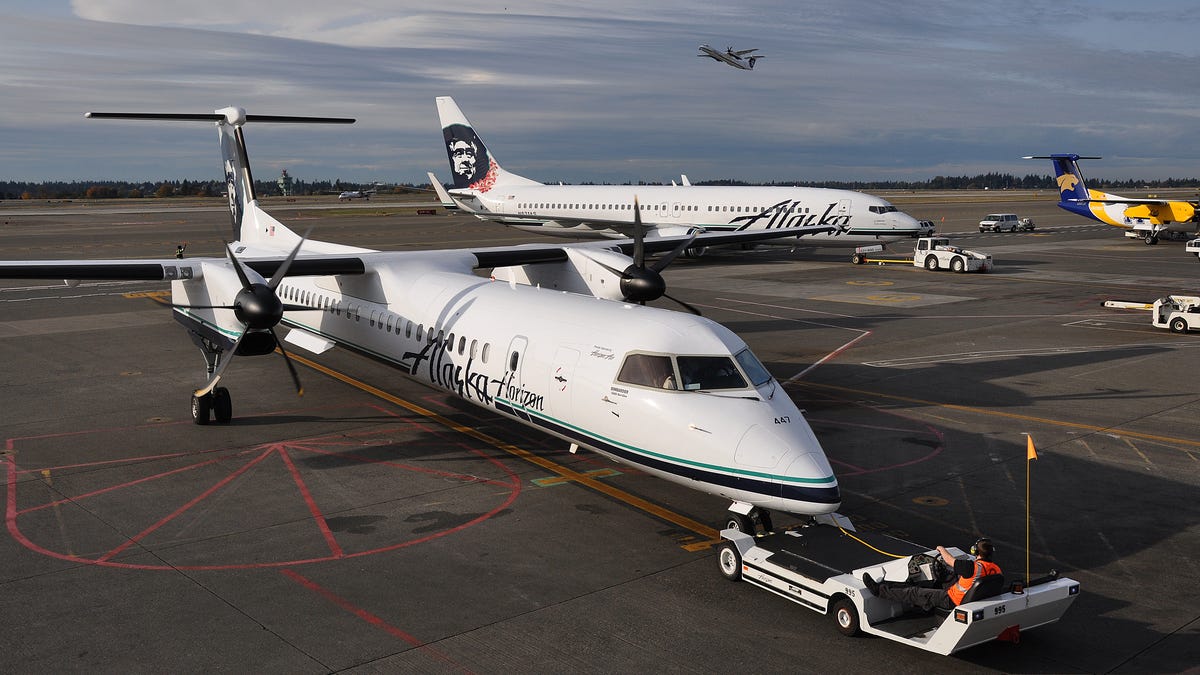Alaska Airlines flies planes fueled by cooking oil
Alaska joins other airlines in the move toward using biofuel blends for commercial flights to save energy and reduce emissions.

The Alaska Air Group is joining the commercial aviation biofuel movement.
The airline launched two flights yesterday running on a blend consisting of 20 percent biofuel and 80 percent petroleum-based fuel. The sustainable biofuel used for the blend was made from cooking oil.
One flight was via a Boeing 737-800 plane from Seattle to Washington, D.C., and the other a Bombardier Q400 plane headed from Seattle to Portland, Ore. Both planes were flown as part of a program to fly more than 75 flights on a cooking oil-based biofuel blend within the coming weeks on Alaska Air's Alaskan Airlines and Horizon Air carriers.
The biofuel was made in Geismar, La., by Dynamic Fuels. One of the challenges was finding a source for aviation biofuels, according to Alaska Air.
"There currently is no supply of aviation biofuels in the Pacific Northwest, although potential sources were identified during a regional assessment by the Sustainable Aviation Fuels Northwest group earlier this year," the airline said in a statement.
The 75 flights on biofuels will decrease emissions by 10 percent compared to their non-biofuel equivalent flights. That may not seem like much, but if the company is able to move all of its flights to a 20 percent biofuel blend, it would annually save the energy equivalent of powering 28,000 homes and the emissions equivalent of removing 64,000 cars from the road, according to company estimates.
The Alaska Air Group missed being the first U.S. airline to regularly fly commercial planes on biofuel by only a few days. Continental Airlines flew a Boeing 737-800 running on algae-based biofuel out of Houston on Monday. Those flights flew on a combination of 40 percent algae-based biofuel and 60 percent petroleum-based fuel.
These U.S. airlines follow several foreign airlines that have already been using aviation biofuel blends in commercial flights to varying degrees.
Virgin Atlantic began limited runs of commercial biofuel flights from London to Amsterdam in 2008.
Air New Zealand began limited biofuel runs in January 2009 using a jatropha bio jet fuel supplied by Terasol Energy.
Lufthansa began using a 50/50 mix of regular fuel and biofuel for its regular scheduled flights between Frankfurt and Hamburg, Germany, in July of this year. The biofuel portion used in the Airbus A321 planes for that route is a mixture of biosynthetic kerosene made from a combination of jatropha, camelina, and animal fats. The fuel for next six months of the run is being supplied by Finnish-based Neste Oil, according to Lufthansa.

